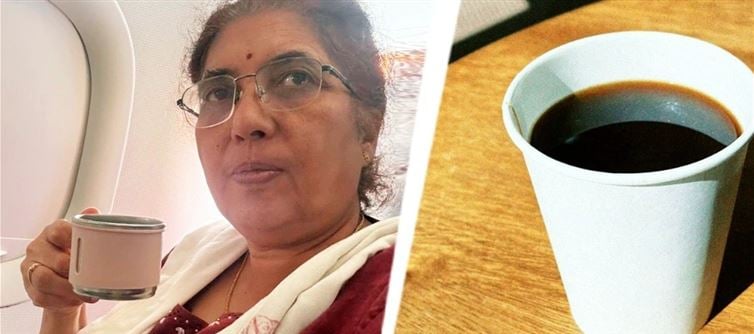
The indian Institute of Engineering Science and Technology's (IIEST) Chairperson of the Board of Governors, tejaswini Ananth Kumar, recently posted a message on social media urging people to bring their own cups when they travel. She posted on X, formerly Twitter, saying, "Bring your own cup along with your water bottle to avoid drinking tea or coffee in paper cups."
"A hot beverage left in a paper cup for just 15 minutes can release up to 25,000 microplastic particles." She gave credit to an IIT Kharagpur study for this information.
PAPER CUPS ARE NOT JUST PAPER
Despite being referred to as "paper" cups, these throwaway cups are often lined with a thin layer of plastic, usually polyethylene, to retain the liquid. This lining starts to degrade when hot liquids are poured into them.
Researchers from IIT Kharagpur, including Dr. sudha Goel and research scholars Ved Prakash Ranjan and Anuja Joseph, found in a 2021 study that the cup releases almost 25,000 microplastic particles into merely 100 milliliters of drink after 15 minutes of contact with hot liquid (85 to 90 degrees Celsius).
Therefore, you can be unknowingly ingesting up to 75,000 microplastic particles every day if you consume three cups of tea or coffee in these cups.
WHERE DO THESE PARTICLES GO?
Microplastics have the ability to enter our bloodstream and move throughout our bodies after being absorbed. According to small-scale laboratory research, they may eventually build up in critical organs like the heart, brain, kidneys, and even the placenta of expectant mothers.
"These microplastics can act as carriers for other toxic substances like heavy metals and organic compounds," stated Dr. Goel. She clarified that this can raise the health hazards even further.
WHAT ARE THE health RISKS?
Though long-term research is still ongoing, scientists are already warning about the potential dangers. Microplastics and the chemicals used in plastics like bisphenols, phthalates, and dioxins, are linked to a range of serious health concerns. These include:
Hormonal imbalances
Reproductive issues
Growth problems in children
Obesity
Cancer
Neurological disorders
Immune system damage
In 2024, a Columbia university study also discovered that more than 2,40,000 nanoplastic fragments—which are considerably smaller than microplastics and potentially more hazardous—can be released by single-use plastic bottles. These particles have the ability to penetrate cell walls and enter the brain, as well as the developing fetus.
WHAT CAN YOU DO?
Carrying your own reusable steel or glass cup, especially while drinking hot drinks, is one of the simplest and most efficient ways to lower your exposure, according to experts. It is not only a more sustainable option for the environment, but it is also healthier for your health.
You don't have to consume plastic with your daily cup of chai. One drink at a time, a small change can keep you healthier.




 click and follow Indiaherald WhatsApp channel
click and follow Indiaherald WhatsApp channel